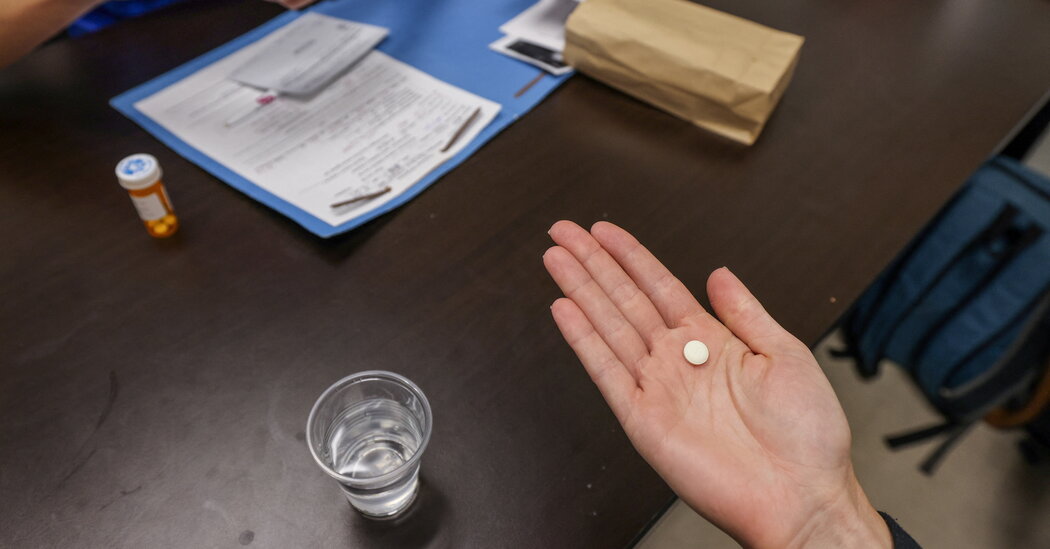
More than half of recent abortions in the United States were carried out with abortion pills, according to preliminary data released on Thursday, a sign that medication abortion has increasingly become the most accessible and preferred method for terminating pregnancy.
The report, issued by the Guttmacher Institute, a research organization that supports abortion rights, found that in 2020, medication abortion — a two-pill method authorized in the United States for pregnancies up to 10 weeks’ gestation — accounted for 54 percent of all abortions. The figure represents a substantial increase from the institute’s previous report, which found that the method accounted for 39 percent of abortions in 2017.
The increase in medication abortion is most likely the result of several factors. The method — which is less expensive and less invasive than surgical abortions — had already become increasingly common before the coronavirus pandemic, driven partly by restrictions from conservative states that imposed hurdles to surgical methods, especially later in pregnancy.
As of 2017, according to the Guttmacher Institute, which collects data by contacting every known abortion provider in the country, nearly a third of clinics offered only medication abortion. In 2019, according to data from the Centers for Disease Control and Prevention, which did not include California, Maryland and New Hampshire, pills accounted for 42 percent of all abortions — and 54 percent of abortions that were early enough to qualify for medication because they occurred before 10 weeks’ gestation.
The pandemic fueled that trend, as medical groups filed a lawsuit asking the federal government to lift the Food and Drug Administration’s requirement that the first of the two abortion pills, mifepristone, be dispensed to patients in person at a clinic or doctor’s office. Citing years of data showing that medication abortion is safe, the medical groups said that patients faced a greater risk of being infected with the coronavirus if they had to visit clinics to obtain mifepristone and pointed out that mifepristone was the only drug that the F.D.A. required patients to get in person from a medical provider but that patients were also allowed to take at home on their own without having the provider present.
A judge granted the request that summer, allowing patients to see a physician by telemedicine and receive pills by mail, but, after a challenge by the Trump administration, the Supreme Court reinstated the restriction early last year.
Under the Biden administration, however, the F.D.A. permanently lifted the in-person requirement in December and also said that pharmacies could begin dispensing mifepristone if they met certain qualifications. The F.D.A.’s action means that medication abortion will become more available to women who find it difficult to travel to an abortion provider or prefer the privacy of being able to terminate a pregnancy in their homes.
As a result, while the new report from the Guttmacher Institute is preliminary — only reflecting information from 75 percent of the clinics and including only percentages, not raw data — the proportion of abortions carried out with pills is expected to increase further.
Nearly 80 percent of all abortions in the C.D.C.’s 2019 data occurred before 10 weeks’ gestation, suggesting that there were many more women who might choose abortion pills over an in-clinic procedure if they could.
At the same time, the growing interest in medication abortion has made it a focus of the highly polarized abortion debate.
The State of Abortion in the U.S.
In 19 states, mostly in the South and the Midwest, telemedicine visits for medication abortion are banned, and so far in 2022, according to the Guttmacher Institute report, 16 state legislatures have introduced bills to ban or limit medication abortion.
With the Supreme Court now considering whether to roll back abortion rights or even overturn the 1973 Roe v. Wade decision, which legalized abortion, experts and advocates on all sides expect medication abortion to play an even more pivotal role in the divisive abortion debate.




